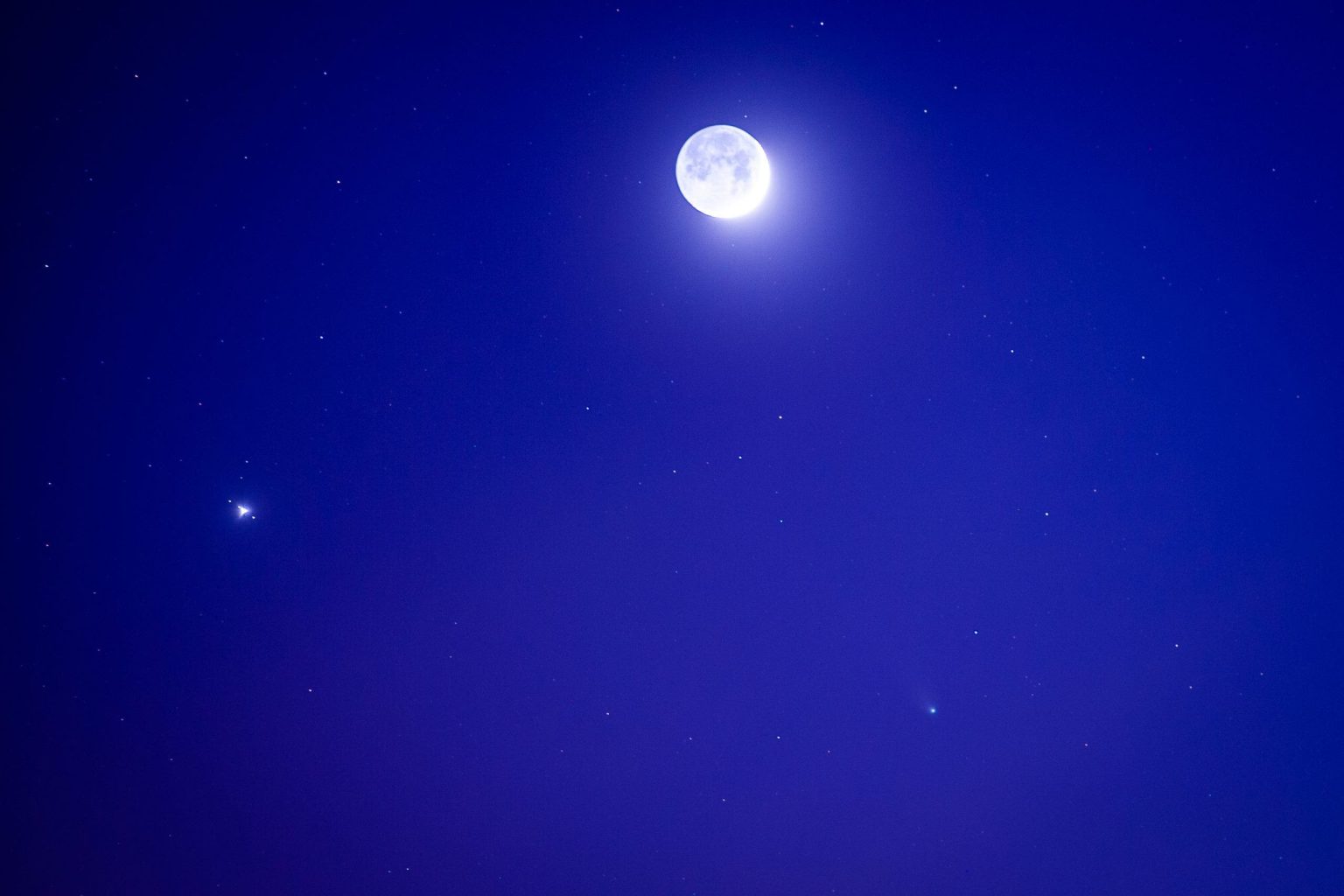The rare celestial event of the total solar eclipse in April 2024 captured the attention of skywatchers, but another celestial phenomenon also garnered interest – the “Devil Comet”, officially known as Comet 12P/Pons-Brooks. This comet, with its horned appearance, neared Earth for the first time in 71 years, adding to the excitement of astronomical enthusiasts. Comets are composed of dust, rock, and ice, with highly elliptical orbits around the sun. While the solid core of a comet remains relatively unchanged, the heat as it nears the sun causes ice to sublimate into gas, expanding the coma of the comet. Comet 12P/Pons-Brooks is recognized for its bright appearance when it nears Earth, with a periodic visitation every 71 years.
Comet 12P/Pons-Brooks, like other comets, is primarily composed of ice, dust, and rock. It acts as a cryovolcano, erupting water, ammonia, or methane instead of molten rock. Nicknamed “Devil Comet” in July 2023 due to an outburst that caused an asymmetrical structure and horn-like features, the comet brightened significantly. While the exact cause of these horn-like structures is uncertain, one theory suggests an uneven ejection of gas and dust, while another posits a possible shadow effect when viewed from Earth. Reaching its peak visibility on April 21, 2024, Comet 12P/Pons-Brooks was best seen with binoculars or a small telescope after sunset, captivating viewers with its unique appearance during the same time as the solar eclipse.
The discovery of Comet 12P/Pons-Brooks dates back to 1812 when comet hunter Jean-Louis Pons first spotted it. Although his observations did not predict its return, William Brooks noticed the comet for a second time in 1883. Similar to Halley’s Comet, Pons-Brooks is a short-period comet, returning to the inner solar system at regular intervals. The comet, also known as “Mother of Dragons” due to its association with the kappa-Draconids meteor shower, appeared normal after the initial outburst before displaying horn-like features, earning it the nickname Devil Comet. Despite its name, Comet 12P/Pons-Brooks poses no threat to Earth as its inclined trajectory weaves between the orbits of Earth and Venus before leaving the inner solar system.
The production of ice and gas from Comet 12P/Pons-Brooks during the outburst in 2023 resulted in a significant brightening and distortion of its appearance. While astronomers are uncertain about the origins of the horn-like structures, the comet’s unique characteristics and periodic visitation every 71 years add to its intrigue and appeal to observers. The comet’s nickname and associations with mythical creatures further enhance its allure, sparking interest and enthusiasm among stargazers. Despite the eccentric appearance and ominous moniker, Comet 12P/Pons-Brooks remains a fascinating and harmless celestial object that offers a spectacular display during its periodic returns.
The bright appearance and unique features of Comet 12P/Pons-Brooks during its closest approach to Earth in 71 years captivated astronomers and skywatchers alike. The comet’s cryovolcanic nature, comet composition, and periodic visitation patterns contribute to its scientific significance and allure. As one of the many celestial wonders that grace the night sky, Comet 12P/Pons-Brooks provides a fascinating insight into the complex and dynamic nature of comets, adding to the richness and beauty of the universe. Despite its ominous nickname and mysterious horn-like structures, the comet remains a source of wonder and curiosity, igniting the imagination and fascination of those who observe its mesmerizing journey through the cosmos.


